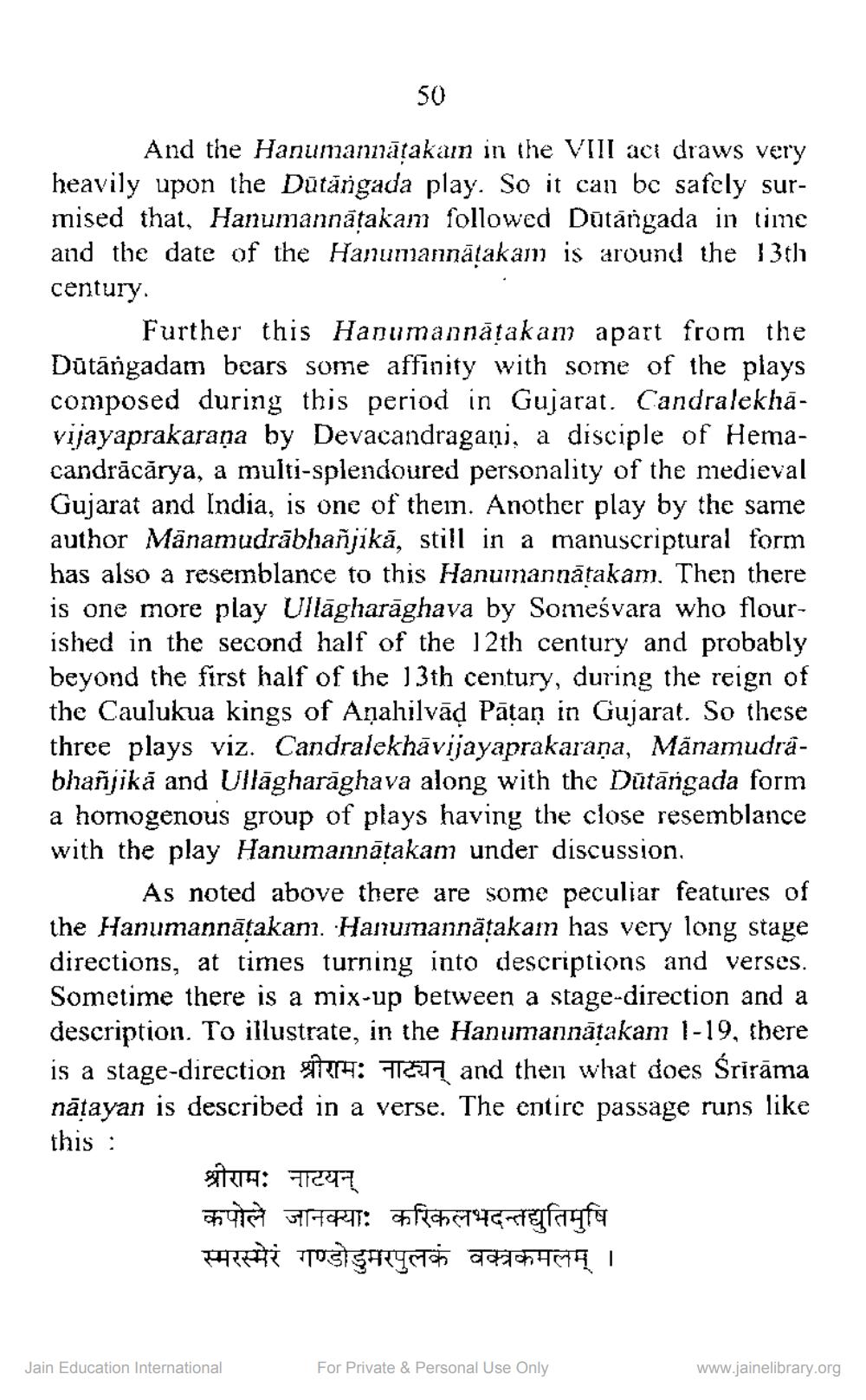Book Title: Hanumannatakam Date and Place of Its Origin Author(s): Vijay Pandya Publisher: ZZ_Anusandhan View full book textPage 5
________________ 50 And the Hanumannātakam in the VIII aci draws very heavily upon the Dutángada play. So it can be safely surmised that, Hanumannātakam followed Dūtāngada in time and the date of the Hanumannātakam is around the 13th century. Further this Hanumannātakan apart from the Dūtāngadam bcars some affinity with some of the plays composed during this period in Gujarat. Candralekhāvijayaprakarana by Devacandragani, a disciple of Hemacandrācărya, a multi-splendoured personality of the medieval Gujarat and India, is one of them. Another play by the same author Mānamudrābhanjikā, still in a manuscriptural form has also a resemblance to this Hanumannātakam. Then there is one more play Ullāgharāghava by Someśvara who flourished in the second half of the 12th century and probably beyond the first half of the 13th century, during the reign of the Caulukua kings of Anahilvād Pātan in Gujarat. So these three plays viz. Candralekhāvijayaprakarana, Manamudrabhañjika and Ullāgharāghava along with the Dūtangada form a homogenous group of plays having the close resemblance with the play Hanumannātakanı under discussion. As noted above there are some peculiar features of the Hanumannātakam. Hanumannätakam has very long stage directions, at times turning into descriptions and verses. Sometime there is a mix-up between a stage-direction and a description. To illustrate, in the Hanumannātakam 1-19, there is a stage-direction श्रीरामः नाट्यन् and then what does Srirama nātayan is described in a verse. The entire passage runs like this: श्रीरामः नाटयन् कपोले जानक्या: करिकलभदन्तद्युतिमुषि स्मरस्मेरं गण्डोडुमरपुलकं वक्त्रकमलम् । Jain Education International For Private & Personal Use Only www.jainelibrary.orgPage Navigation
1 ... 3 4 5 6 7 8 9
